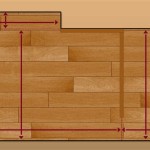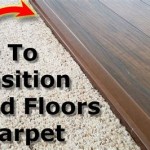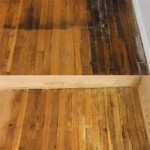Laminate Flooring Molding Types and Sizes:
Laminate flooring is a popular choice for homeowners due to its durability, affordability, and ease of installation. However, to complete the look of your laminate flooring and protect its edges, moldings are essential. Here's a comprehensive guide to the types and sizes of laminate flooring moldings:
Types of Laminate Flooring Moldings:
1. Quarter Round: Quarter round molding is a versatile molding that can be used to cover the gap between the floor and baseboards or walls. It has a quarter-circular profile and is available in various widths to accommodate different gaps.
2. Base Shoe: Base shoe molding is a narrow molding that is installed at the bottom of the baseboards. It helps to protect the baseboards from damage and hide any expansion gaps in the flooring.
3. T-Molding: T-molding is used to transition between two different flooring surfaces, such as laminate flooring and carpet. It has a T-shaped profile and is available in various widths to match the thickness of the flooring.
4. Reducer: Reducer molding is used to transition between two flooring surfaces of different heights. It has a sloped profile that gradually transitions from one flooring height to another.
5. End Cap: End caps are used to finish the ends of laminate flooring planks. They are available in various designs and colors to match the flooring.
Sizes of Laminate Flooring Moldings:
The size of the molding you need will depend on the gap you need to cover or the transition you need to make. Quarter round molding is typically available in widths ranging from 1/2 inch to 1 inch. Base shoe molding is typically narrow, with widths ranging from 1/4 inch to 1/2 inch. T-molding and reducer molding are available in widths that match the thickness of the flooring, typically ranging from 1/2 inch to 3/4 inch.
Choosing the Right Moldings:
When choosing laminate flooring moldings, consider the following factors:
• Molding Type: Determine the type of molding you need based on the gap or transition you need to cover.
• Molding Size: Measure the gap or transition and choose the molding size that matches.
• Color and Style: Choose moldings that complement the color and style of your laminate flooring and décor.
• Installation: Consider the installation method of the moldings. Some moldings can be nailed or stapled, while others may require adhesive.
By understanding the different types and sizes of laminate flooring moldings, you can choose the right ones to complete the look of your flooring and protect its edges. With proper installation and maintenance, laminate flooring moldings can enhance the beauty and durability of your floor for years to come.

Laminate Flooring Molding U S Floor Masters

The Most Common Flooring Trims How They Are Used

The Most Common Flooring Trims How They Are Used

Floor Trim The Ultimate Guide

Seamless Transitions A Guide To Installing And Choosing Floor Molding Mr Sander

Floor Trim The Ultimate Guide

Accessories Of Laminate Flooring End Cap L Type China Accessory Concave Line Made In Com

Moldings Guide Floor Molding Styles And Types

The Basics Of T Molding Definition Uses And Types Tallest Tree

T Moulding 3t Millwork Shandong Qianhong Wood Industry Co Ltd
Related Posts








